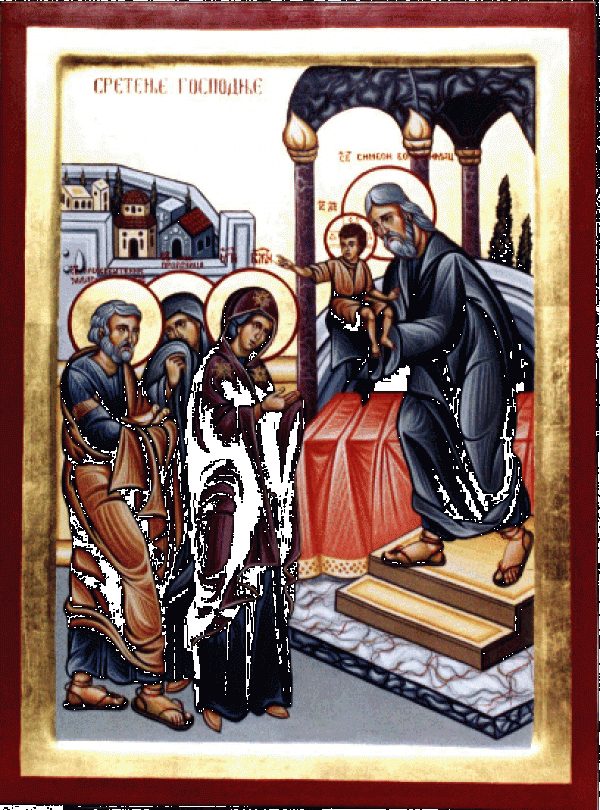On the fortieth day after His birth, the most holy Virgin brought her divine Son to the Temple in Jerusalem, to consecrate Him to the Lord and to purify herself according to the Law (Lev. 12:2-7, Exod. 12:2). And though neither the one nor the other was necessary, nevertheless the Lawgiver would not in any way transgress the Law which He had given through His servant and prophet Moses. At that time Zacharias, the father of John the Baptist, was serving his turn as high priest in the Temple. He stood the Virgin Mary in the place for maidens, not that for married women. On this occasion, there were two very special people present: the elder, Simeon, and Anna the daughter of Phanuel. The righteous elder took his Messiah up in his arms and said: "Lord, now lettest Thou Thy servant depart in peace, for mine eyes have seen Thy salvation." Simeon also spoke the following words of the Christ Child: "Behold, this Child is set for the fall and rising again of many in Israel." Then Anna, who had from her youth served God in the Temple in fasting and prayer, and who herself recognised the Messiah, praised the Lord and made known to the inhabitants of Jerusalem the coming of the awaited One. But the Pharisees, present in the Temple and seeing and hearing all that passed, and being vexed with Zacharias for having stood the Virgin Mary in the place for maidens, made this known to King Herod. Believing this to be the new King of whom the star-followers from the East had spoken, Herod quickly sent to have Jesus killed. But in the meantime the holy family had already escaped from the city and set out for Egypt, under the direction of an angel of God. This day has been celebrated from the very earliest times, but its solemn celebration dates from 544, in the time of the Emperor Justinian
Source: SPC

